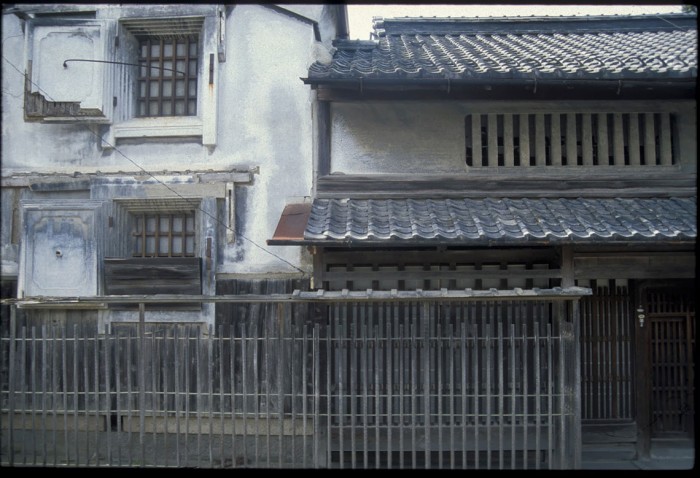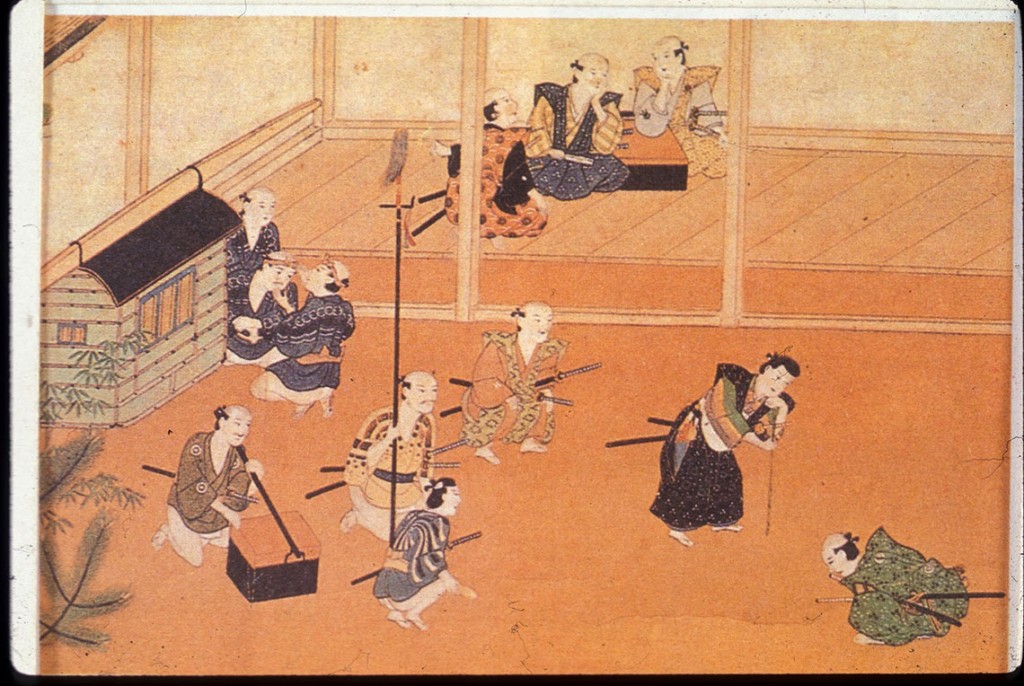
The largest building in each post-town was the honjin. Usually located in the center of the town, the honjin was the designated inn for daimyo and other travelers of high rank to stop for a rest or to stay overnight. Set in a walled enclosure with entrance through an elaborate gateway, the honjin comprised gardens, >storerooms (kura), and servants quarters as well as the main building. The main building typically had twenty or more rooms set aside exclusively for the use of visiting nobility and officials of the shogunate. Of course the quality of accommodation had to be in keeping with the luxurious standard of living normally enjoyed by these important guests.
Almost every post-town had a honjin (Hosokute is one exception), and in the busier towns (usually those closest to Edo where sankin kotai traffic was heavier) there may have been two or even three honjin. Timetables for travel of these guests were fixed well in advance, and officials would be sent out ahead of the main party to ensure everything was in order. Signs would be posted at the entrance to post-towns announcing the names of the important guests expected to be traveling through, and the exterior of the honjin was bedecked with the official colors and crest (mon) of the guest. This system ensured that the potentially embarrassing situation of two or more high-ranking guests arriving simultaneously from different directions would not occur. As far as the shogunate was concerned, the system also meant it was difficult for daimyo to meet together for any length of time, and thus, conceivably, hatch plots against the government.

Greeting at entrance to the inn
Most regular travelers, therefore, such as daimyo making their way to and from annual attendance at the shogun’s court, would tend to keep to the same schedule each time,
Honjin was also the title given to the hereditary masters of these inns. Holding such important status within the town, the honjin invariably combined his function with that of village headman. As such, the honjin represented the interests of all the inhabitants of the post-town in dealings with shogunate’s officials, and was responsible for ensuring all laws and edicts were adhered to. Frequently honjin claimed ancestry from the rural gentry who, before the ‘sword hunt’ of 1580, had been permitted to carry arms as any other samurai.
Today, very few original honjin buildings survive. The oldest, and perhaps best preserved on the Nakasendo is at Ashita. Most fell into decline after the abolition of the sankin kotai system because they were too expensive to maintain and, if the buildings were destroyed in a fire, they were never rebuilt. An exception to this rule is the reconstructed honji at Tsumago which was begun in 1993. The substantial sites occupied by the honjin, however, often proved useful for other purposes such as for building new town halls or, in the case of Okute, for a new elementary school. On the other hand, Tsumago post-town, which is a popular tourist destination, undertook to rebuild the old honjin in 1993 to further preserve its appeal as an example of an old Nakasendo post-town. Together with a museum and the waki-honjin, the reconstruction is proving popular.

